Asiago cheese, originating from Italy and named after a small town in the Veneto region, is a popular hard cheese that offers a delightful taste experience. With its distinct flavor profile, Asiago has become a top choice for cheese enthusiasts worldwide.
Asiago cheese offers hints of sweetness and savory notes with a rich and slightly tangy flavor profile. Different Asiago varieties offer unique characteristics. Asiago Pressato has a creamy texture and mild flavor, while aged Asiago has a more complex and nutty taste.
So if you’ve ever wondered what asiago cheese tastes like, get ready to embark on a delicious journey through the flavors of this Italian delight.
The Distinctive Taste of Asiago Cheese
Nutty and Slightly Sweet Flavor of Asiago
Asiago cheese is known for its unique flavor profile that sets it apart from other varieties. One of the key characteristics of Asiago is its nutty taste, which adds a delightful richness to any dish. Asiago offers a subtle sweetness that lingers on your palate. This sweetness enhances the overall flavor experience and makes it a popular choice among cheese enthusiasts.

Asiago’s Rich and Creamy Flavor Profile with Delicate Tanginess
Another aspect that makes Asiago cheese stand out is its rich and creamy flavor, as it has a velvety smoothness that melts in your mouth. The creaminess of Asiago comes from its high-fat content, giving it a luxurious texture that pairs well with various ingredients.
In addition to its creaminess, Asiago also offers a delicate tanginess. This tangy note adds depth to the overall flavor profile and balances out the richness of the cheese. It provides a pleasant contrast that intrigues your taste buds without overpowering the other flavors in your dish.

Asiago Can Be Mild to Sharp Depending on Aging
The aging process plays an important role in determining the sharpness or mildness of Asiago cheese. Younger versions have a milder flavor, making them suitable for those who prefer a more subtle taste. These younger cheeses are often called “Asiago Pressato” or “Fresco.” They have a softer texture and offer hints of buttery sweetness.
On the other hand, aged varieties like “Asiago d’Allevo” develop more complex flavors as they mature. With age, these cheeses become firmer and crumblier in texture while intensifying their taste. Aged Asiagos can have a sharper, more pronounced flavor with nuttier undertones. They are perfect for adding a bold kick to your culinary creations.
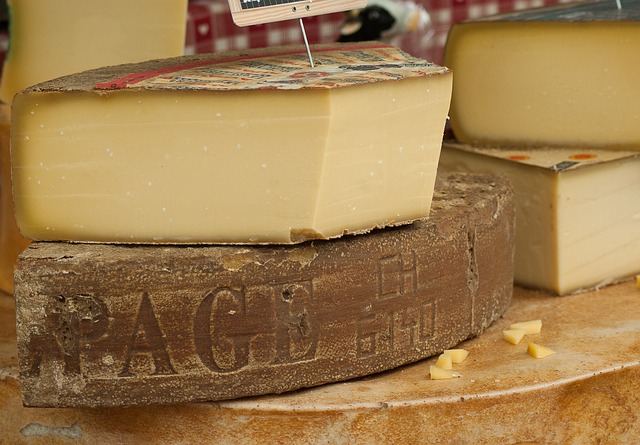
The Aroma and Crumbly Texture of Asiago
Apart from its distinct flavors, Asiago cheese has a captivating aroma that adds to the sensory experience. When you bring a piece of Asiago close to your nose, you’ll be greeted by a rich and inviting smell. This aroma hints at the delicious flavors that await you when you take a bite.
In terms of texture, Asiago can vary depending on its age. Younger cheeses tend to be softer and more pliable, while aged varieties become crumbly and firm. This crumbly texture adds an enjoyable element to dishes like salads or pasta, providing a delightful contrast against other ingredients.

Appreciating the Varied Tastes of Asiago Cheese
There is a wide variety to choose from. One such cheese that stands out for its unique flavor profile is Asiago cheese. This hard cheese hails from Italy and is known for its distinct taste. Depending on the age and type of Asiago cheese, you can expect different flavors that add depth and richness to various dishes.
Asiago Pressato: Mild and Buttery with a Subtle Nuttiness
Young Asiago cheese, also known as “Asiago Pressato,” is aged for a shorter period, typically around 20-40 days. This results in a milder flavor compared to its aged counterparts. Young Asiago has a creamy texture with a buttery taste that melts in your mouth. It offers subtle nutty undertones, making it an excellent choice for those who prefer a more delicate flavor.
Some popular ways to enjoy young Asiago include:
- Shredding it over pasta dishes like spaghetti or fettuccine.
- Using it as a topping on pizzas or flatbreads.
- Incorporating it into salads for added creaminess.
- Pairing it with fruits like apples or pears for a delightful contrast.

Aged Asiago: Intense, Complex Flavors with Hints of Caramel and Fruitiness
On the other end of the spectrum lies aged Asiago cheese, referred to as “Asiago d’allevo” or “Asiago Vecchio.” Aged for at least nine months (and sometimes up to two years), this variety develops intense flavors that will tantalize your taste buds.
Aged Asiago boasts rich caramel notes along with hints of fruitiness. Its texture becomes crumbly and grainy as it ages, adding an enjoyable texture to every bite. The longer aging process makes the flavors deeper and more complex, creating a truly remarkable cheese.
Here are some delicious ways to savor aged Asiago:
- Grating it over pasta dishes like lasagna or ravioli.
- Pairing it with cured meats and olives for a flavorful charcuterie board.
- Enjoying it on its own, accompanied by a glass of red wine.
- Incorporating it into bread recipes for a cheesy twist.
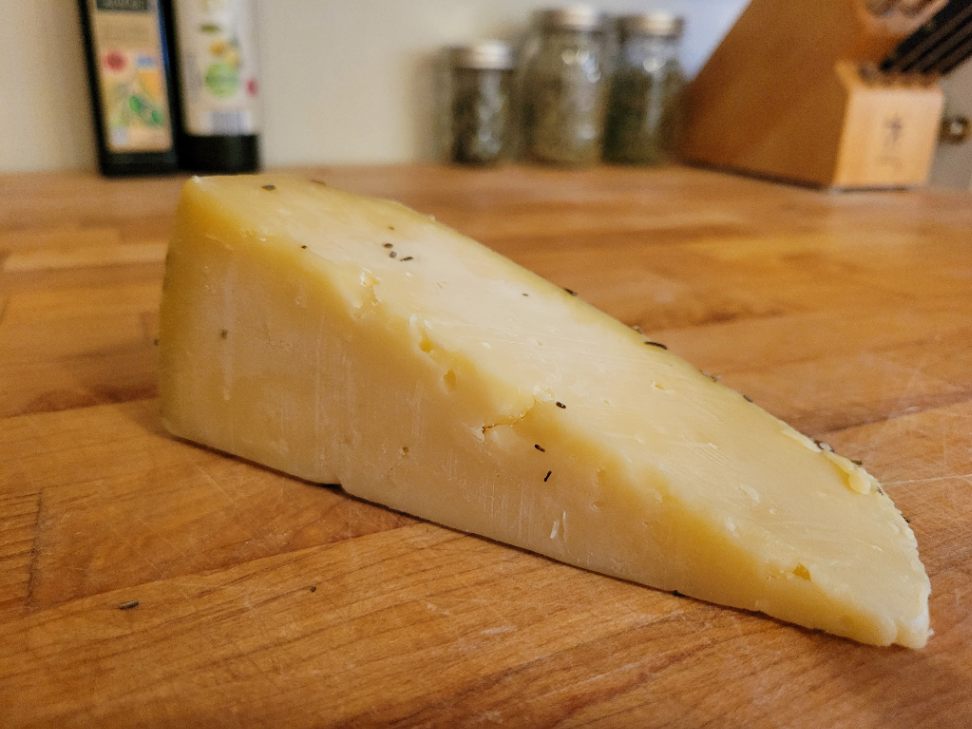
Fresco Asiago: Soft, Fresh Taste with a Mild Tanginess
Fresco Asiago, also known as “Asiago Pressato Fresco,” is the youngest variety of Asiago cheese. It is typically aged for just 15-20 days, resulting in a soft and fresh taste. This type of Asiago has a mild tanginess that adds brightness to any dish.
Fresco Asiago works well in dishes where you want the cheese to be the star without overpowering other flavors. Some tasty ways to enjoy this variety include:
- Using it as a filling for sandwiches or paninis.
- Crumbling it over salads for an extra burst of flavor.
- Pairing it with fresh fruits like grapes or berries.
- Melting it into creamy pasta sauces for added richness.
Flavor Differences: Asiago vs. Parmesan and Romano
Asiago: Milder Than Both Parmesan and Romano
Asiago cheese, known for its distinct flavor, offers a milder taste than Parmesan and Romano counterparts. The flavor profile of Asiago is characterized by a delicate and nutty undertone, making it a versatile choice for various culinary applications. It boasts a subtle tanginess that adds depth to dishes without overpowering other ingredients.
Parmesan: Stronger and Sharper than Asiago
Parmesan cheese is widely hailed as the “King of Cheeses” due to its bold flavor profile. Its sharpness can be attributed to its aging process, which can range from 12 months up to several years. As it ages, Parmesan develops crystalline textures that provide bursts of umami flavors when consumed.
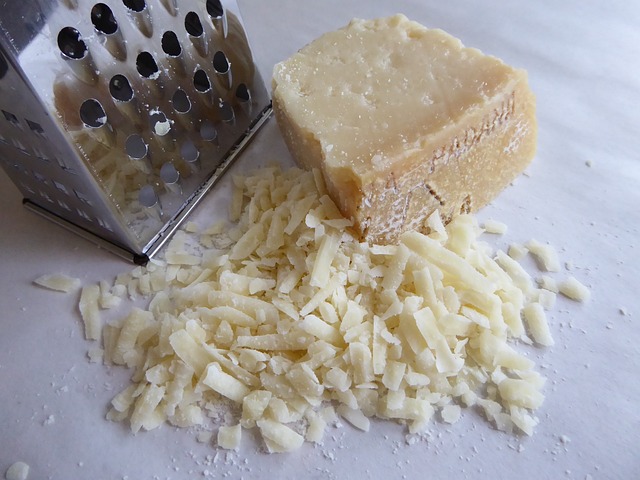
Romano: Saltier and More Pungent compared to both Parmesan and Asiago
Romano cheese stands out with its salty punch and pungent aroma. It has a more assertive flavor compared to both Parmesan and Asiago cheeses. The saltiness of Romano can be quite prominent, making it an excellent addition when you’re looking for that extra kick in your dishes.
Texture and Aging: Exploring the Characteristics of Asiago Cheese
Asiago cheese is renowned for its unique texture and aging process, contributing to its distinct flavors. Let’s delve into the characteristics of this delectable cheese and uncover what makes it so special.
Semi-firm Texture that Becomes Crumbly with Age
One of the defining features of Asiago cheese is its semi-firm texture. When young or freshly made, it possesses a smooth and slightly elastic consistency that is easy to slice or grate. As it ages, however, the texture gradually transforms into a crumbly one, making it perfect for crumbling over salads or pasta dishes.
Aging Ranges from 3 Months (Fresh) to Over 12 Months (Aged)
The aging process plays a crucial role in shaping the flavor profile of Asiago cheese. Depending on the desired characteristics, Asiago can be aged anywhere from three months to over twelve months. This wide range allows for different variations in taste and texture.
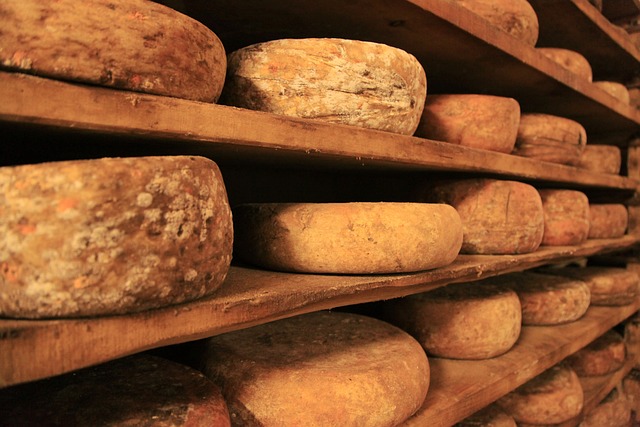
Longer Aging Results in Drier Texture and Stronger Flavors
Asiago cheese aged for an extended period develops a drier texture than its younger counterparts. The moisture content decreases as time goes by, resulting in a more concentrated flavor. The longer aging period also intensifies the nutty and savory notes in Asiago, creating a robust taste experience.
Aging Process Enhances Complexity while Maintaining Creaminess
While aging causes some cheeses to become crumbly and dry, Asiago manages to balance complexity and creaminess. As it matures, the flavors deepen without sacrificing its creamy mouthfeel. This harmonious combination makes aged Asiago an excellent choice for both eating on its own or incorporating into various recipes.
The production process of aged Asiago involves carefully monitoring temperature and humidity levels during aging. This meticulous attention ensures that each wheel develops its unique characteristics while maintaining its desired texture and flavors.
What Is Parmesan-Asiago?
Parmesan-Asiago is a delightful blend of two cheeses, combining the characteristics of both Parmesan and aged Asiagos, offering a unique combination that balances nuttiness, sharpness, and creaminess.
Nuttiness, Sharpness, and Creaminess
The flavor profile of Parmesan Asiago can be described as a perfect harmony between nuttiness, sharpness, and creaminess. It has the nutty undertones characteristic of Parmesan cheese and the tangy sharpness found in aged asiagos. It possesses a creamy texture that adds richness to every bite.
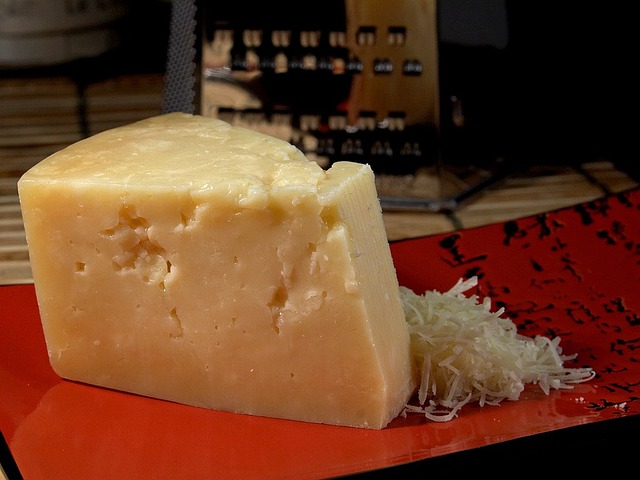
Versatile in Culinary Applications
One of the great things about Parmesan Asiago is its versatility in culinary applications. Its robust flavor makes it an excellent choice for grating over pasta dishes or salads. The nutty notes also make it a fantastic addition to risottos or soups. Furthermore, its creamy texture allows it to melt beautifully when used in grilled sandwiches or as a topping for pizzas.
Elevates Dishes with Bold Flavors
Parmesan-Asiago has the power to elevate any dish with its bold flavors. Whether you’re making a classic Italian dish like spaghetti carbonara or experimenting with new recipes, this cheese adds depth and complexity to your creations. Its distinctive taste can transform ordinary dishes into extraordinary culinary experiences.
Pairings and Complementing Ingredients
Several options enhance its flavors even further:
- Fruits: Pairing this cheese with fruits like pears or figs adds a delightful sweetness that balances the sharpness of the cheese.
- Nuts: Combining Parmesan Asiago with toasted walnuts or almonds creates a wonderful contrast in textures and flavors.
- Wines: A full-bodied red wine, such as a Cabernet Sauvignon or Barolo, pairs beautifully with Parmesan Asiago, enhancing its nutty and savory characteristics.
The Perfect Cheese for Cheese Lovers
If you’re a cheese lover looking for something unique and flavorful, Parmesan Asiago is definitely worth trying. Its balanced combination of nuttiness, sharpness, and creaminess will satisfy your taste buds and leave you craving more.
What Cheese is Similar to Asiago?
If you’re curious about what Asiago cheese tastes like, chances are you might be interested in finding a similar cheese that can satisfy your taste buds. There are a few cheeses that share similarities with Asiago in terms of flavor profiles and characteristics. Let’s explore some alternatives to Asiago cheese:
Fontina Cheese: Nutty Flavor Profile
Fontina cheese is an excellent option if you’re looking for a cheese with a nutty flavor profile akin to Asiago. This semi-soft Italian cheese has a rich, buttery taste with hints of earthiness. Its texture is smooth and creamy, making it perfect for melting over dishes or enjoying on its own. Fontina pairs well with crusty bread, cured meats, and even fruits like apples or pears. For additional information, see my article on the flavor profile of Fontina cheese.
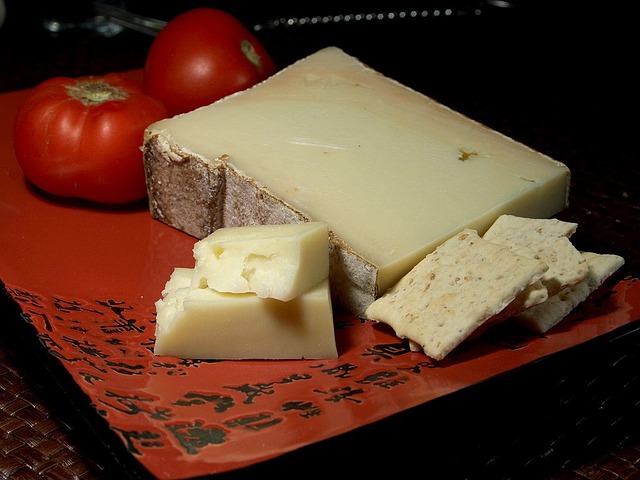
Pecorino Romano: Comparable Saltiness but Different Textures
Another alternative to consider is Pecorino Romano. While Pecorino Romano offers comparable saltiness to Asiago, the textures of these two cheeses differ significantly. Pecorino Romano is a hard sheep’s milk cheese that boasts a sharp and tangy flavor. It has a crumbly texture that adds delightful complexity to any dish it graces. Grate some Pecorino Romano over pasta or use it as a flavorful addition to salads or soups.
When exploring alternatives to Asiago cheese, keep in mind that each substitute brings its unique qualities and characteristics to the table. Experimenting with different options can lead you on an exciting culinary journey where you discover new flavors and combinations.
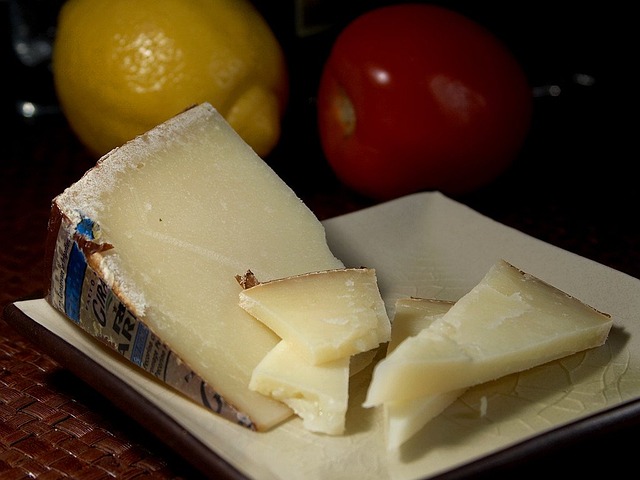
To summarize:
- Fontina cheese shares similarities with Asiago in terms of its nutty flavor profile.
- Pecorino Romano offers comparable saltiness but has different textures compared to Asiago.
Remember, taste preferences vary from person to person, so don’t be afraid to try different cheeses until you find the one that suits your palate. Whether you’re using them in recipes or enjoying them on a cheese platter, these alternatives can provide a delightful experience similar to Asiago.
Terroir Characteristics: How Location Influences Asiago Taste
Like wine or coffee, terroir (the environmental factors that affect a food product) plays a crucial role in shaping the flavor profile of Asiago cheese. The grasses, wildflowers, and herbs that cows graze on in different regions impart unique nuances to the milk they produce, resulting in subtle variations in taste.

Consider tasting Asiago cheese from the Alpine meadows of Italy, where cows feed on aromatic herbs and rich grasses. In such cases, the cheese may exhibit earthy notes with subtle hints of wildflowers in its flavor profile. On the other hand, if you were to savor Asiago made from milk sourced from the Po River Valley in Italy, you might experience a creamier texture with nutty notes. These regional differences give each variety of Asiago its own distinct personality.
As you embark on your journey to discover the world of Asiago cheese, remember that no two cheeses are exactly alike. Embrace these flavor variations as an opportunity to explore and find your favorite. Whether you enjoy it grated over pasta or savored on its own with a glass of wine, let your taste buds guide you through this delightful culinary adventure.

Frequently Asked Questions (FAQs)
What dishes can I use Asiago cheese in?
Asiago cheese is incredibly versatile and can be used in various dishes. It pairs well with pasta dishes such as risotto or fettuccine Alfredo. You can also melt it over pizzas or incorporate it into sandwiches for an extra burst of flavor. Grated Asiago adds depth to salads and soups.
Is there a vegan alternative to traditional Asiago cheese?
If you’re following a vegan diet or have dietary restrictions, there are vegan alternatives to traditional Asiago cheese available. Look for plant-based cheeses made from ingredients like cashews or almonds, which can provide a similar texture and taste.
How should I store Asiago cheese?
To keep your Asiago cheese fresh and flavorful, store it in the refrigerator. Wrap it tightly in wax paper or aluminum foil to prevent it from drying out. Avoid using plastic wrap as it can trap moisture and cause the cheese to spoil faster.
Can I freeze Asiago cheese?
While freezing is not recommended for most cheeses, including Asiago, you can freeze grated Asiago if needed. Place the grated cheese in an airtight container or freezer bag before freezing. Thaw it in the refrigerator when you’re ready to use it.
Can lactose-intolerant individuals consume Asiago cheese?
Asiago cheese is generally considered low in lactose due to its aging process. Many lactose-intolerant individuals find that they can enjoy small amounts of aged cheeses like Asiago without experiencing discomfort. However, everyone’s tolerance may vary, so it’s best to listen to your body and consult with a healthcare professional if necessary.

